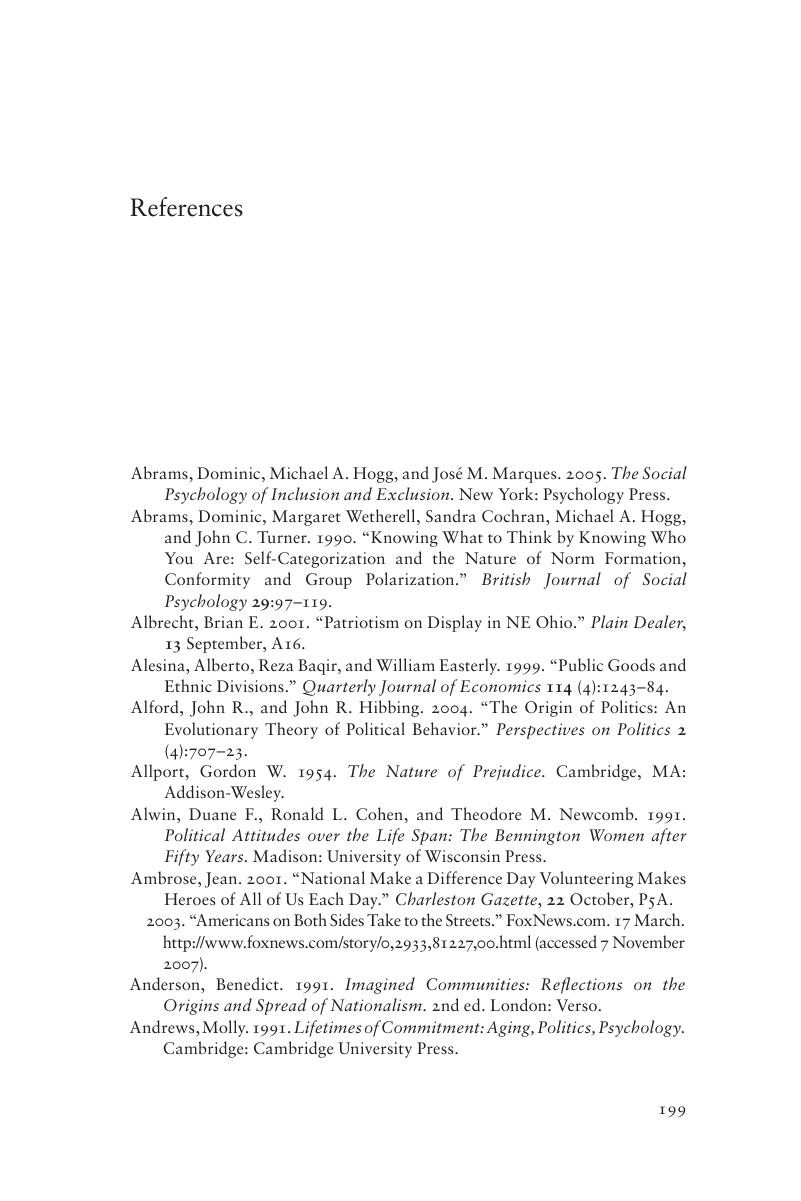Book contents
- Frontmatter
- Contents
- List of Figures
- List of Tables
- Preface
- 1 The Need for a Social Theory of National Identity
- 2 Commitment to the National Group
- 3 The Setting of National Group Boundaries
- 4 The Desire to Help the National Group
- 5 Loyalty in the Face of Criticism
- 6 Is National Identity Good or Bad?
- Appendix
- References
- Index
- References
References
Published online by Cambridge University Press: 05 June 2012
- Frontmatter
- Contents
- List of Figures
- List of Tables
- Preface
- 1 The Need for a Social Theory of National Identity
- 2 Commitment to the National Group
- 3 The Setting of National Group Boundaries
- 4 The Desire to Help the National Group
- 5 Loyalty in the Face of Criticism
- 6 Is National Identity Good or Bad?
- Appendix
- References
- Index
- References
Summary

- Type
- Chapter
- Information
- Who Counts as an American?The Boundaries of National Identity, pp. 199 - 216Publisher: Cambridge University PressPrint publication year: 2009



